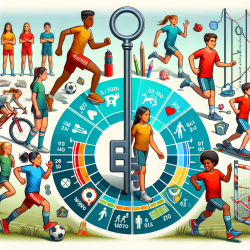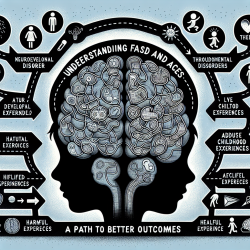Introduction
As practitioners dedicated to improving children's health outcomes, understanding the complex interplay between anthropometry, body composition (BC), and physical fitness (PF) is crucial. A recent study titled Can Anthropometry and Body Composition Explain Physical Fitness Levels in School-Aged Children? provides valuable insights into these relationships, offering data-driven guidance for enhancing children's physical health.
Key Findings from the Study
The study analyzed 360 school-aged children, assessing various metrics such as BMI z-score, waist/height ratio (WHtR), body-fat percentage (BF%), and muscle weight (MW). The researchers found significant associations between these metrics and PF levels, measured through tests like the 800-m run, sit-and-reach, 1-min sit-ups, and standing long jump.
- BF% and Cardiorespiratory Fitness: Higher BF% was independently correlated with poorer performance in the 800-m run, highlighting the impact of body fat on endurance.
- Age and Flexibility: Older children demonstrated better flexibility, speed/agility, and lower body power, suggesting that age-related growth enhances motor skills and muscle function.
- Sex Differences: Girls exhibited better flexibility, while boys showed higher muscle weight and lower BF%, reflecting physiological differences influenced by sex hormones.
Implications for Practitioners
These findings underscore the importance of considering both anthropometric and BC measures when assessing and promoting children's PF. Practitioners can leverage this information to tailor interventions that address individual needs, focusing on:
- Weight Management: Implement programs that encourage healthy eating and regular physical activity to manage BMI and reduce BF%.
- Fitness Testing: Incorporate PF assessments alongside clinical measures to gain a comprehensive understanding of children's health.
- Personalized Interventions: Develop age- and sex-specific fitness programs that cater to the unique physiological characteristics of each child.
Encouraging Further Research
While this study provides valuable insights, further research is needed to explore the causative relationships between these variables and to extend findings to diverse populations. Practitioners are encouraged to contribute to this growing body of knowledge by conducting longitudinal studies and exploring innovative interventions.
Conclusion
Understanding the associations between anthropometry, BC, and PF is essential for promoting children's health. By integrating these insights into practice, practitioners can enhance the effectiveness of health promotion strategies and contribute to better health outcomes for children.
To read the original research paper, please follow this link: Can Anthropometry and Body Composition Explain Physical Fitness Levels in School-Aged Children?










